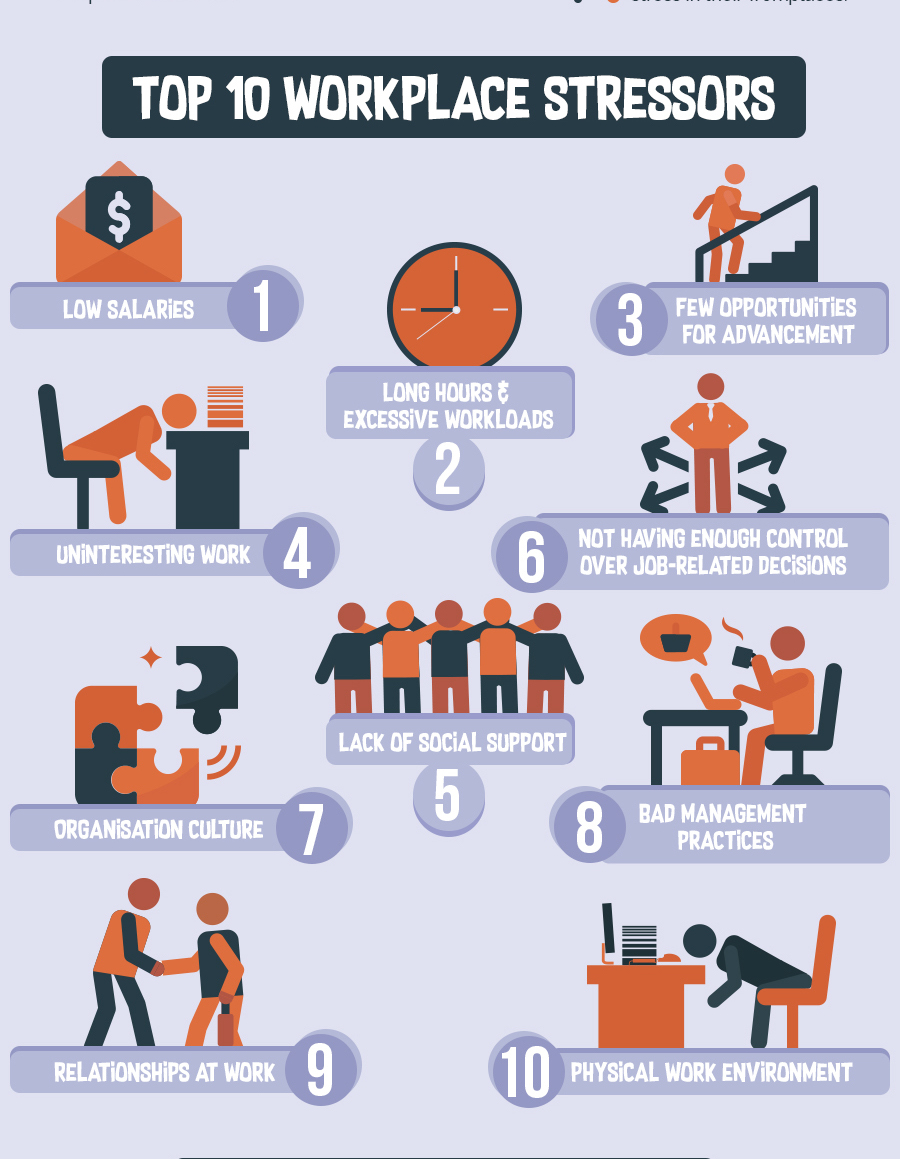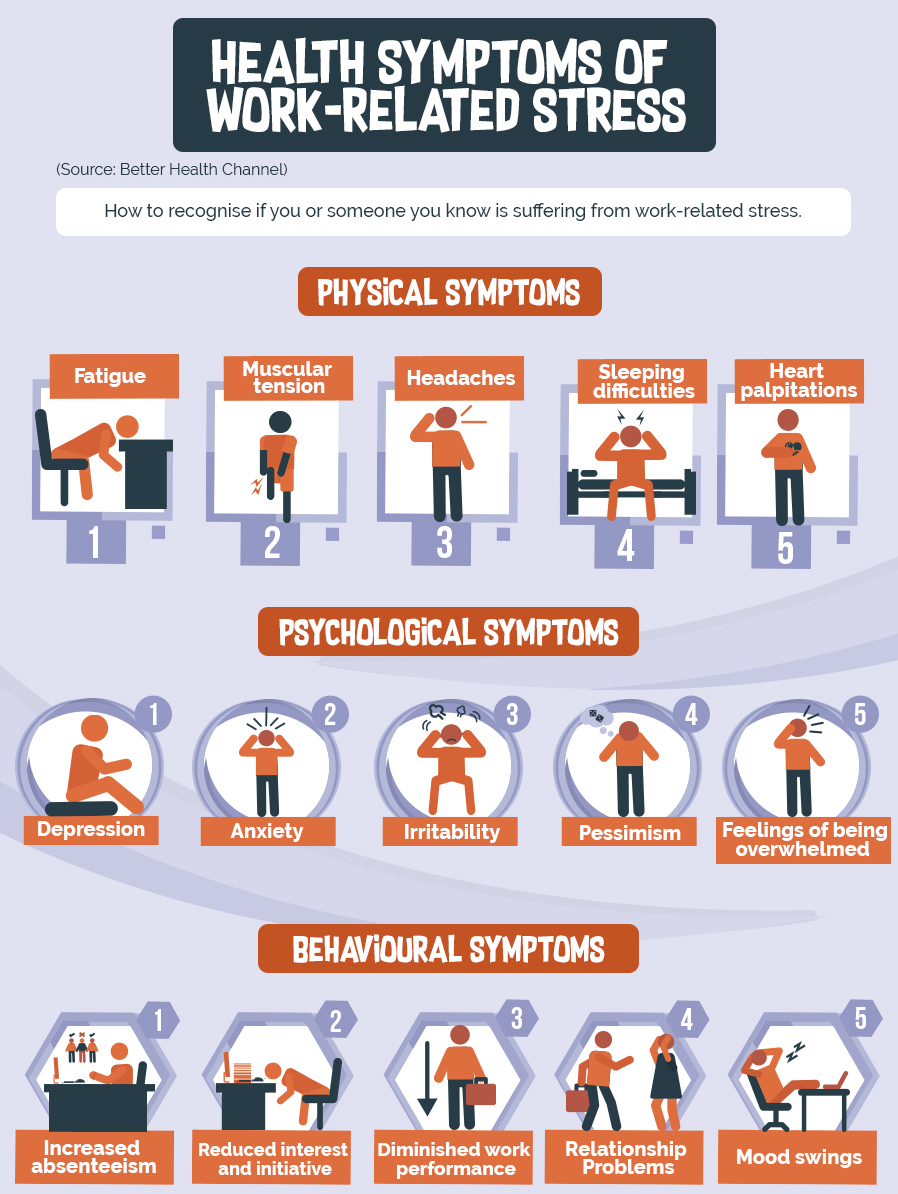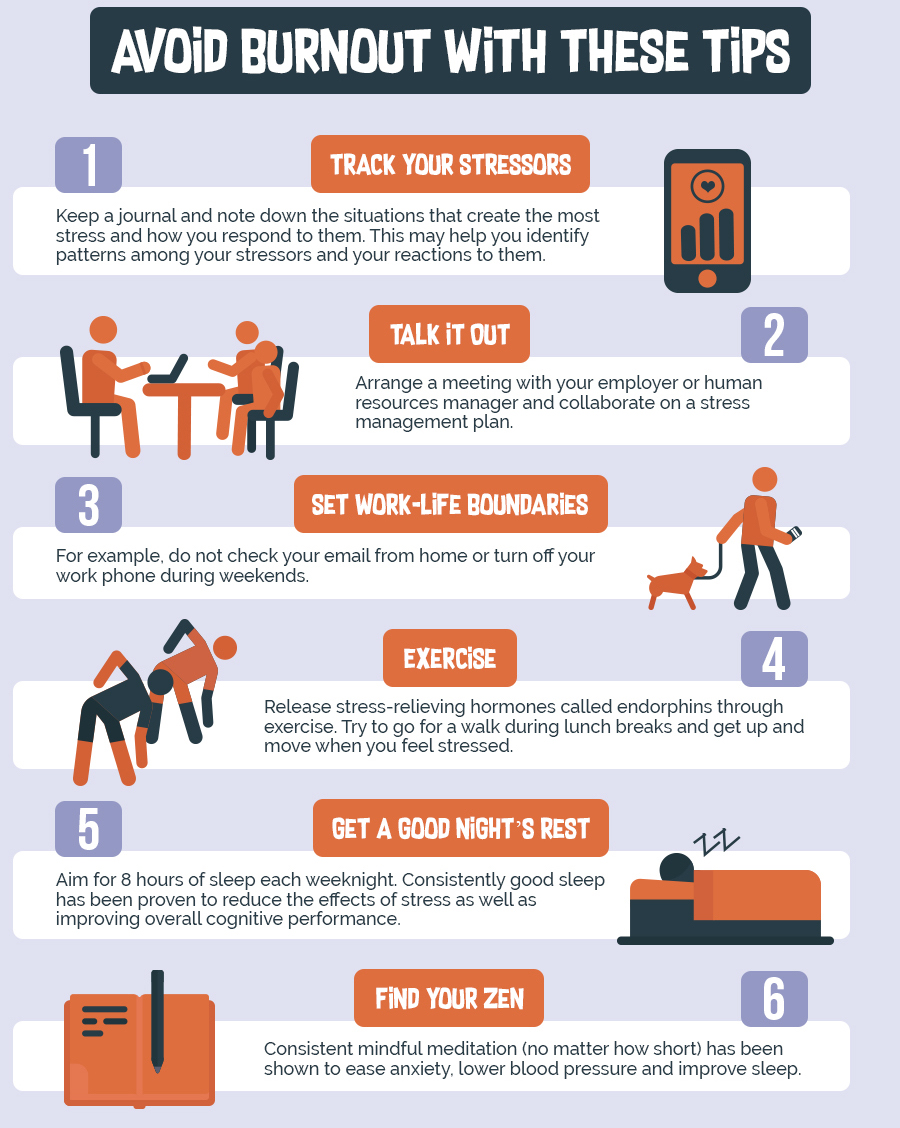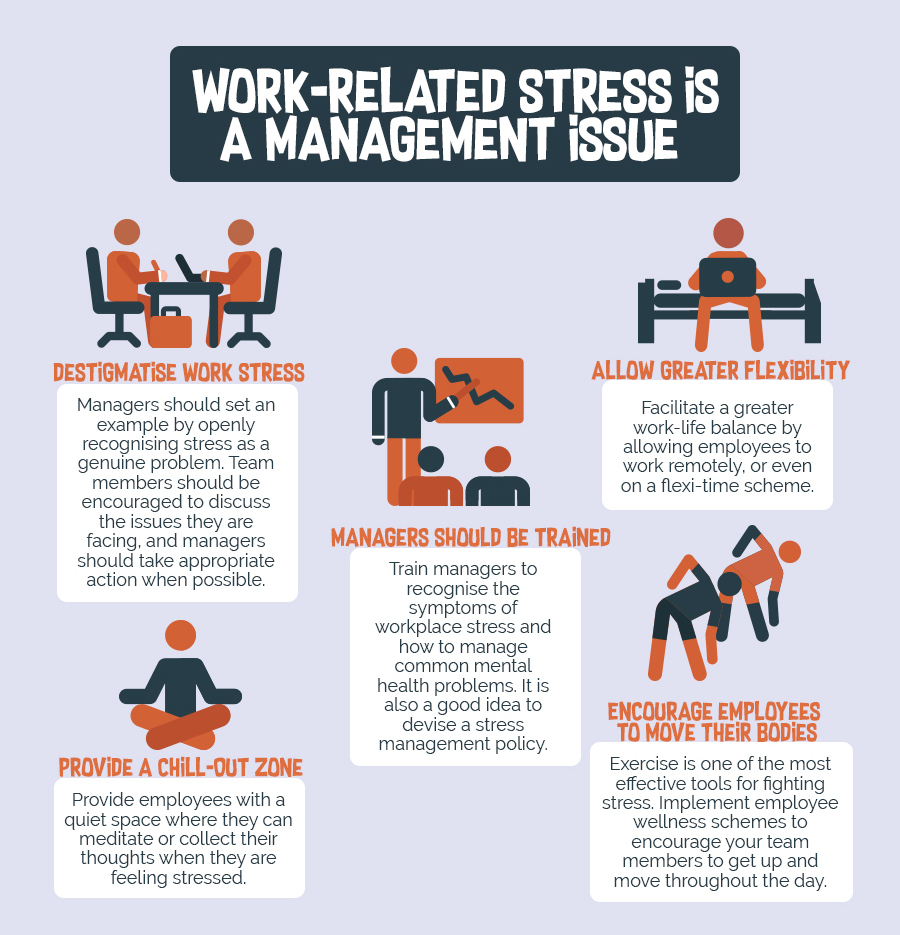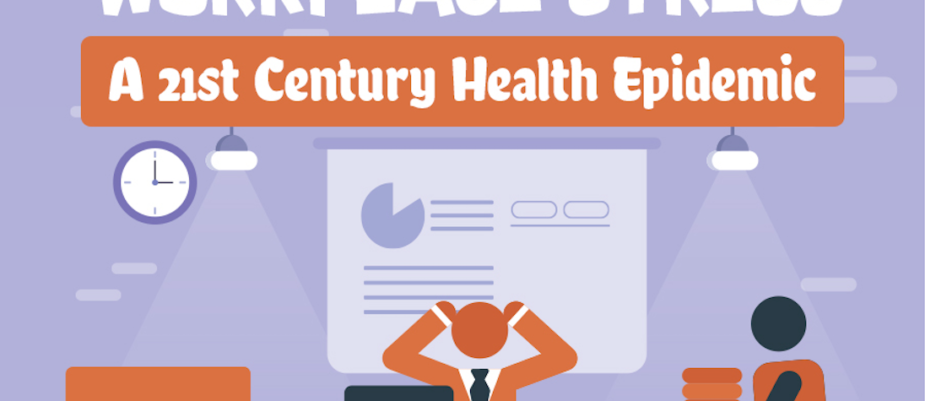
Did you know that up to 90% of all doctor’s office visits are caused by stress? The World Health Organisation (WHO) has revealed that stress is more widespread than ever before and is the “health epidemic of the 21st century.” Many surveys demonstrate lost of productivity and the staggering cost of stress on business.
Despite the serious situation, something can be done: starting from recognizing the symptoms and implementing daily strategies to combat stress in the workplace, as suggested by the infographic developed by Ayers Management.
For many, work is the culprit with a staggering 65% of people saying that their job is the biggest source of stress in their lives. In fact, 6 in 10 workers in major global economies are experiencing increased workplace stress.
There are many reasons why today’s workers are more stressed than ever. The overwhelming workloads and excessive hours brought about by the “24-7” work culture means that today’s workers get less and less opportunity for respite and recharging.
We all know that stress is an unavoidable part of any job. Sometimes it can be a positive force – pushing us to work harder and better – but oftentimes it can make us feel unproductive, run-down and anxious. So how can you tell when stress at work becomes too much and actually puts you at risk of burnout?
Stress manifests in many ways and the symptoms can be physical (e.g. muscular tension, headaches), psychological (e.g. pessimism, anxiety) and behavioural (e.g. increased absenteeism, diminished work performance).
These are listed in more detail in the infographic below.
There are a number of strategies you can try out to combat workplace stress. One good tip is to practice consistent mindful meditation (no matter how short) which can ease anxiety, lower blood pressure and improve sleep.
Another top tip is to aim for 8 hours of sleep each weeknight, this will reduce the effects of stress and improve overall cognitive performance. For more, check out the infographic.
It also important to implement a stress management policy, starting from recognizing stress as a genuine problem.
It is essential to allow greater flexibility, facilitating smart working policies that also allow work remotely and facilitate work-life balance.
Download the whole infographic by Ayers Management here.

